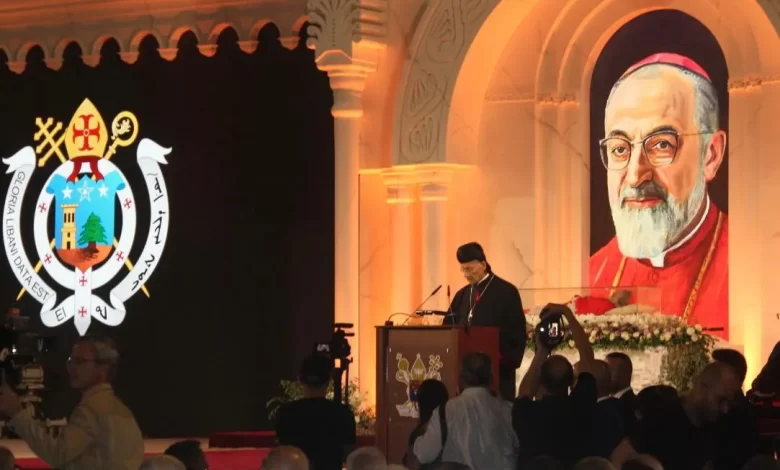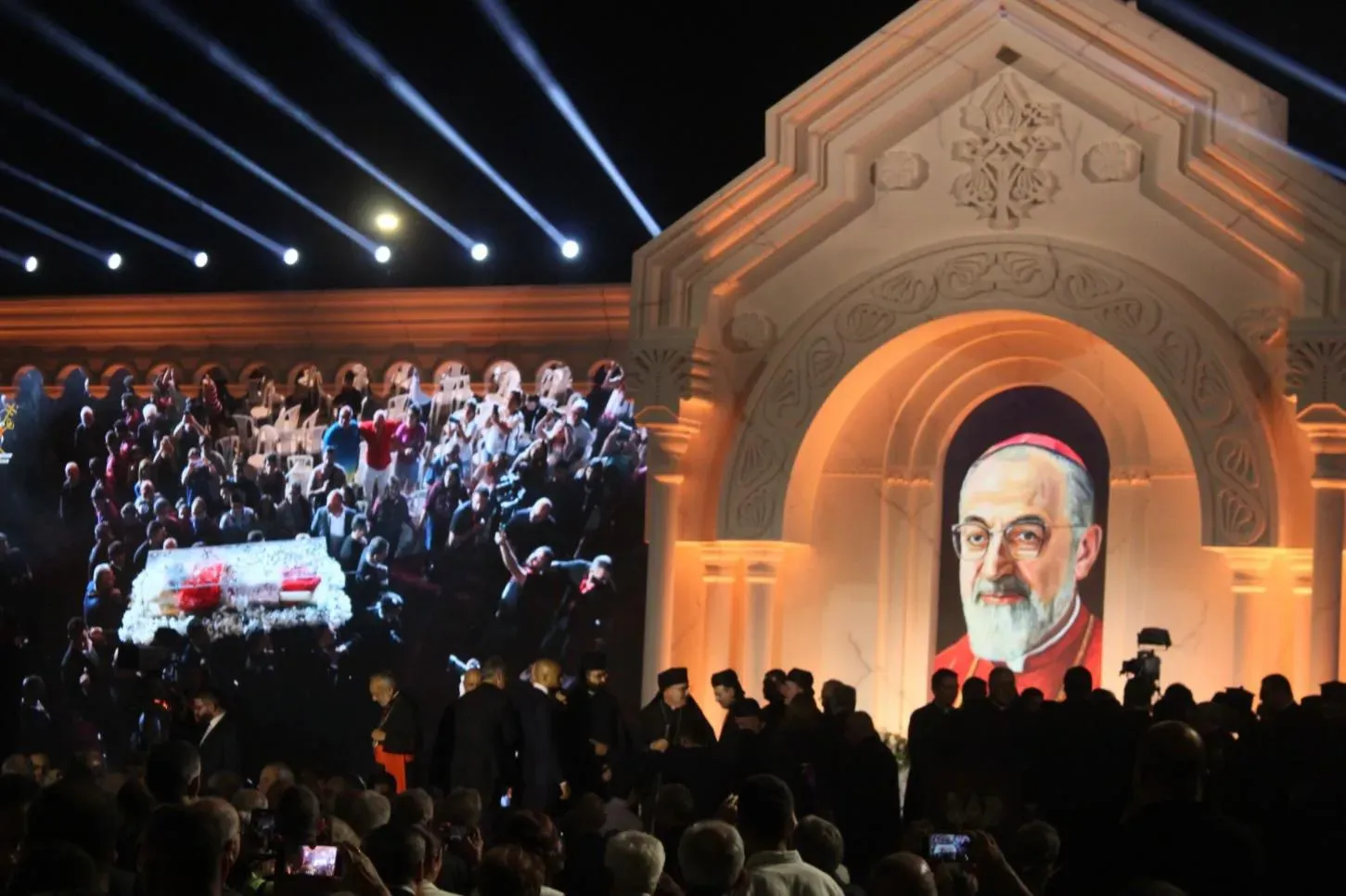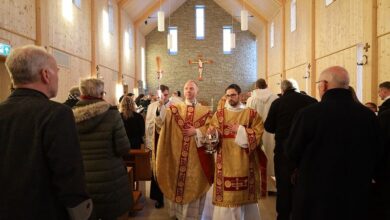Body of Armenian patriarch on path to possible sainthood returns to Lebanon

 A large crowd gathered for the ceremony welcoming Patriarch Gregory Peter XV Agagianian's remains to Beirut's Martyrs' Square on Thursday, Sept 12, 2024. / Credit: Romy Haber/ACI Mena
A large crowd gathered for the ceremony welcoming Patriarch Gregory Peter XV Agagianian's remains to Beirut's Martyrs' Square on Thursday, Sept 12, 2024. / Credit: Romy Haber/ACI Mena ACI MENA, Sep 15, 2024 / 07:00 am (CNA).
On Thursday, Sept. 12, the Armenian Catholic Patriarchate held a grand ceremony in Beirut’s Martyrs’ Square to welcome the remains of cardinal and patriarch Gregory Peter XV Agagianian from Rome. His body will be laid to rest in the Armenian Catholic Cathedral of St. Elias and St. Gregory the Illuminator in downtown Beirut.
Agagianian, known for his strong opposition to communist rule during the Cold War era, became a prominent figure in Catholic Church history. He was a leading candidate for the papacy on two occasions. The process of his beatification, a step toward sainthood in the Catholic Church, began in Rome on Oct. 28, 2022.
The late Armenian Catholic patriarch’s remains arrived in Lebanon in a glass casket carried by 12 young Lebanese men from various religious denominations, symbolizing interfaith unity.
As the Armenian scouts’ band played, attendees reached out to touch the casket for blessings. Some threw rice and rose petals on the casket — a Middle Eastern tradition symbolizing a joyful welcome.
The ceremony, attended by various political and religious figures, began with a documentary about the late patriarch’s life.
In a heartfelt speech, the current Armenian Catholic Patriarch, Raphaël Bedros XXI Minassian, said: “We brought him to Lebanon to show the world our unity, solidarity, and mutual love among denominations and all parties. Young men from various denominations carried the casket, representing a true reflection of what a Lebanese family looks like.”
Maronite Patriarch Cardinal Bechara Boutros al-Rahi, leader of Lebanon’s largest Christian community, confirmed that Aghajanian’s tomb would be in the Armenian Catholic Cathedral of St. Elias and St. Gregory the Illuminator in Dabbas Square, Beirut.
“He is among the incorruptibles of the Church,” he added. “We hope that this miracle will facilitate the plea for his beatification. In any case, he will be a blessed and great saint. We congratulate the Armenian Catholic Church, all churches, and all of Lebanon. God’s wonders are great in his saints.”
Bishop Krikor Badishah, auxiliary bishop of the patriarchal Diocese of Beirut, stated: “Thanks to the magnificent presence of numerous participants, Martyrs’ Square is once again not a mere location but a national symbol that unites all Lebanese, regardless of their affiliations. It is a beacon of hope shining over our beloved homeland, constantly reminding us of our shared values and our unbreakable unity.”
During the ceremony, singer Layal Nehmé Matar performed, accompanied by the Lebanese army’s band, adding an atmosphere of reverence and solemnity.
The beatification process
The initiative to beatify Agagianian began with former Armenian Catholic Patriarch Krikor Bedros XX Ghabroyan. It gained momentum when the current patriarch, Minassian, requested the opening of Agagianian’s tomb about two years ago, revealing his apparently incorrupt body.
While there is no official protocol in the Church for determining whether a body is incorrupt and incorruptibility is not considered an indication of sainthood, many saints are considered to be incorrupt. The formal process for his possible canonization was launched in Rome on Oct. 28, 2022.
This stage involved a thorough investigation, examining all aspects of Agagianian’s life and virtues. Information was gathered from written documents and contemporary witnesses, as well as accounts of miracles attributed to his intercession. The process is now progressing rapidly.

The legacy of Patriarch Agagianian
Agagianian was renowned for his virtue. The Virgin Mary held a special place in his spirituality, and he was devoted to the Sacred Heart of Jesus and the Eucharist. He was an advocate for justice and served the marginalized, including the elderly, orphans, and people with disabilities. Even after becoming a bishop, he continued to visit the Armenian diaspora worldwide.
Agagianian held several significant positions in the Church. Named a cardinal by Pope Pius XII in 1946, he was head of the Sacred Congregation for the Propagation of the Faith (Propaganda Fide), the future Congregation for the Evangelization of Peoples, from 1958 to 1970 and presided over the papal commission responsible for drafting laws for Eastern Catholic Churches. He was also appointed by Pope Paul VI to serve as one of the four moderators of the last years of the Second Vatican Council (1962–1965), a landmark event in modern Catholic history. At a time when the pope rarely left Rome, Agagianian served as an envoy of the Holy See, visiting many countries across multiple continents. He was twice considered “papabile,” a serious candidate for the papacy, in 1958 and 1963.
Agagianian’s connection to Lebanon
Agagianian was of Georgian-Armenian descent but acquired Lebanese citizenship after coming to the country as an apostolic visitor in 1935. A year later, at the age of 42, he became patriarch of the Armenian Catholic Church.
He developed close relationships with various segments of Lebanese society and worked to bring politicians together. He would often gather them at the Armenian Catholic monastery in Jounieh (Mount Lebanon) for private meetings. Agagianian played a role in reconciling Maronite Patriarch Paul Meouchi with then-Lebanese President Camille Chamoun. He also helped appoint Charles Helou (who later became president of Lebanon) as the first Lebanese ambassador to the Vatican.
Agagianian was known as the “builder patriarch” due to his numerous architectural projects, including a school and an orphanage in Anjar, Lebanon. His remains were laid to rest in the Armenian Catholic Cathedral of St. Elias and St. Gregory the Illuminator, which he built in the heart of Beirut.
This article was first published by ACI Mena, CNA’s Arabic-language news partner, and has been translated and adapted by CNA.




